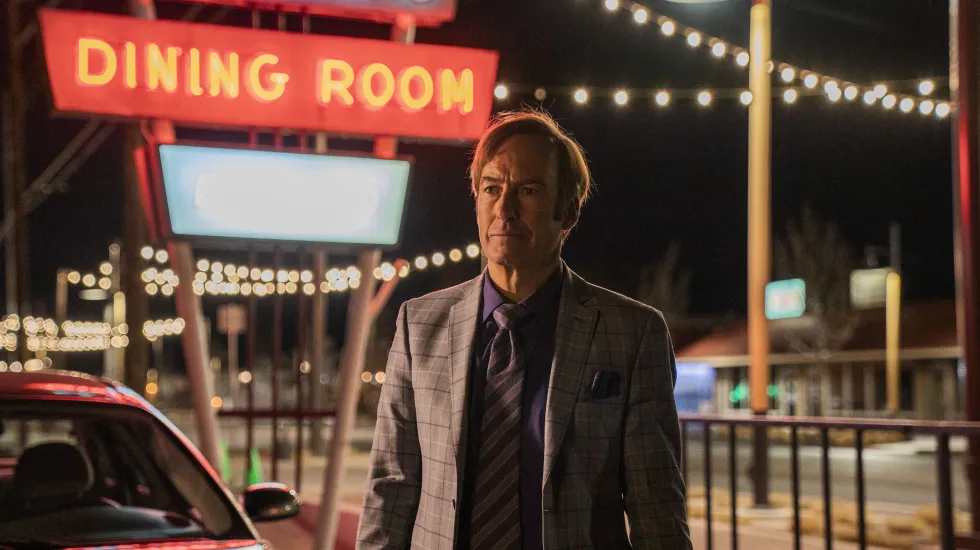
From Cicero to Albuquerque to Omaha, as Jimmy McGill and Saul Goodman and Gene Takavic, Berwyn’s own Robert John “Bob” Odenkirk has gifted us with one of the all-time great multi-series characters in the history of television, alongside the likes of Ed Asner’s Lou Grant, Kelsey Grammer’s Frasier, Richard Belzer’s Detective John Munch and I’d argue for Sherman Helmsley’s George Jefferson and Isabel Sanford’s Louise Jefferson to join those ranks.
First seen in the eighth episode of Season 2 of the epic, Shakespearean meth opera “Breaking Bad” in 2009, Odenkirk’s Saul Goodman was quickly established as the speed-talking, fast-thinking, conniving and late-night commercial, locally famous court jester; but thanks to the amazingly fertile imagination of “BB” and “Saul” creator Vince Gilligan and Odenkirk’s brilliantly executed work, we’ve seen Jimmy/Saul/Gene evolve into one of the most complex, intriguing, manipulative, cunning, sometimes downright evil and yet somehow empathetic characters this side of Tony Soprano.
8 p.m. Mondays on AMC and AMC+
Some two years after the stunning and violent and twist-filled Season 5 finale and with Odenkirk surviving a serious, heart-related health scare during production last July, “Better Call Saul” is back for a sixth and final season, with seven episodes scheduled for July.
I’ve seen the back-to-back chapter that will air on April 18, and I was instantly transported back to the greater BBEU (Breaking Bad Extended Universe) by these twin episodes of great television.
We pick up the story in the immediate aftermath of the events of Season 5, with Saul Goodman traveling down an ever-darker road; Kim Wexler (the sublime Rhea Seehorn) fully aware she’s made a deal with the devil and becoming Saul’s partner in law and disorder; while Gus Fring (Giancarlo Esposito), Lalo Salamanca (Tony Dalton), Nacho (Michael Mando) and Mike Ehrmantraut (the wonderfully deadpan and dead-eyed Jonathan Banks) making their respective moves after Lalo survived the mass attack on his family.
The Season 6 premiere opens with a slow-motion ballet of neckties (really) that starts in black and white before popping with pastel colors and then segues to a scene of uniformed workers removing the inventory from a certain location brimming with foreshadowing clues, and it’s all set to the theme from “Days of Wine and Roses.” Within three minutes we’re reminded why this is one of the most visually creative series in television history.
Odenkirk and Seehorn pick up their memorable chemistry as Saul and Kim plot to take down their former boss, the white-shoe law firm partner Howard Hamlin (Patrick Fabian)—and the plan they hatch is nefarious even by Saul’s standards (or lack thereof). You can feel the respective consciences of Saul and Kim eroding by the minute, and you have a sense of dread about their immediate futures.
I don’t want to spoil anything that happens beyond that, other than to note we get the usual repertoire of fantastic call-backs and inside references—but those notes never get in the way of the primary storyline in play here.
With a total of 13 new episodes coming our way, there’s little doubt “Better Call Saul” is poised to meet our expectations and solidify its standing as one of the best series ever.







